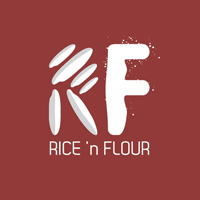I’m back with my little Saigon adventure. For a brief history of Saigon, check out my previous post on Saigon market. This time let’s talk more about foods 
The day starts early in Saigon. As early as 5 a.m. in the morning, going out on the streets, you will notice people are starting to prepare for a busy day ahead, especially the food vendors and the market ladies. At 6 a.m. when the city hits the busiest morning traffic, most of the vendors will have their foods steaming hot for the people to stop by and get their energy supply for the day. In this post, I will introduce to you the two most popular breakfast dishes that really symbolize Saigon’s cuisine.
COM TAM
Travelling to Saigon, it is a must to try com tam (in Vietnamese cơm tấm), the most common meal there no matter it is day or night. Com tam is made of broken rice (gao tam or gạo tấm), grilled pork chops or ribs that is marinated in lemongrass, fish sauce, and various spices (suon nuong), shredded pork skin (bi), and steamed egg with pork stuffing (cha trung hap), topped with scallion oil and served with fish sauce and Vietnamese pickles on the side.

In the old times, com tam was created mainly for the labour force that is poor workers who need lots of fuel in the morning to maintain their energy for a hard day of work. Pigs are easy and cheap to rear and their various parts can be used in many ways. Thus, pork occupied the highest proportion of animal meat in the daily meals of Vietnamese people. Broken rice is a grade of rice consisting of grains broken during the milling process. It is generally sold at half the price of that of the regular grain; and so is considered rice for the poor. Because of cheap ingredients, com tam was affordable for people of every society class and quickly became one of the most popular meal in Saigon. Up until now when the Vietnamese economy has seen much improvements, people still use broken rice as it has already becomes the soul of the dish. I personally love it because of its somewhat-dry texture and wonderful chew that cannot tasted in the regular grain variety.
As said, Com tam is so popular that it can be found anywhere in Saigon. But let me give you a tip: don’t look for Com tam in fancy restaurants. Instead try this: Follow your nose, sit down at an open-kitchen food stall on the side of a busy street, and take a look at rack after rack of pork ribs on the flame. The enchanting sound of meat hissing, fat searing, juice dripping, and the irresistible smell of a big fat piece of lemongrass-scented pork being grilled on the charcoal flame will bring you to a whole new dimension of pure gastronomic pleasure.
HU TIEU
If Hanoi is famous for its Pho or Phở (Beef noodle soup) that has already made its way to become an iconic national dish and is so well-known to foreigners, Saigon has Hu tieu or Hủ tiếu (pronounced ‘hoo tee-u’) as the analog. Hu tieu, which can also be translated as noodle soup, has its roots from China. The reason for this is because Saigon is greatly influenced by Southern China’s culture, happened when a big wave of Chinese immigrated here at the end of the 17th century in hope of finding a better place to live. If you have a chance to visit Cho Lon (Chợ lớn), the big district where most of the Chinese in Saigon is populated, you will easily find, in many places, the old-styled Chinese food stalls selling very traditional Chinese Hu tieu, which is made of tapioca rice noodle in pork bone broth with no fish sauce, served with typical toppings such as minced pork and thinly sliced char siu (Chinese BBQ pork).
A hu tieu restaurant in the Chinese district

Hu tieu nowadays has developed and modified into many different versions, most distinctly being Hu tieu Nam Vang (a very famous Chinese-Cambodian inspired noodle soup), Hu tieu My Tho, Hu tieu Sa Dec, and a lot more, distinguished by the types of noodles and toppings served. The most popular types of noodles served in a bowl of Hu tieu are: the soft thick white noodles that taste similar to Pho, the chewy clear tapioca noodles (hu tieu dai), the springy Chinese egg noodles (mi trung or mì trứng), or even a combination of those. And options of toppings are countless. Depending on what is offered at the store, they can be pork slices, minced pork, pork bones, pork offal (liver, kidney, heart, etc.), shrimps, squids, quail eggs, etc.
A typical bowl of hu tieu with shrimp, pork, quail egg,… and delicious broth

You can pretty much choose whatever you want and make it your own customized bowl of Hu tieu. Sometimes, a bowl of hot soup under the blazing sun can be a bit overwhelming. In that case, you can also choose the ‘dry’ version of Hu tieu, which there will be a bowl of noodles and toppings served with a separate bowl of hot broth. Very interesting! Other garnishes can include fried shallots, fried pork fat, Chinese celery (can tau), Chinese chives (he), or chrysanthemum leaves (tan o).
Not strikingly complicated to make but the simple delicious broth and the plentiful topping options have helped Hu tieu earn a place in many Saigonese’s heart, and of course, appetite.
— TO BE CONTINUED —




JOIN US